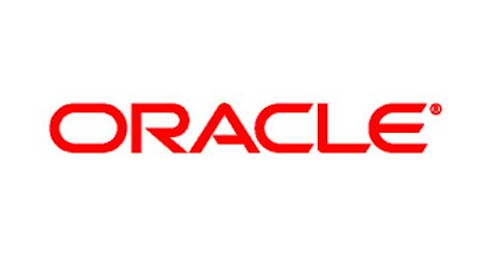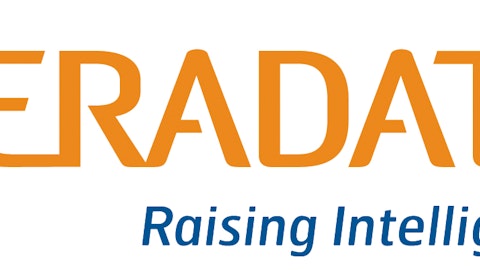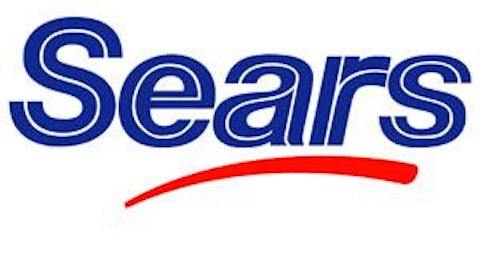Let me offer you a choice: you can buy a company’s growing earnings at 15% or you can buy a company expected to grow earnings by 37%. All things being equal, intelligent investors would always choose the faster-growing company. However, things are rarely this simple, and investors in eBay Inc (NASDAQ:EBAY) and Amazon.com, Inc. (NASDAQ:AMZN) have to know that their stocks will be compared frequently. There are some problems with comparing what analysts expect from these two companies: I think in Amazon’s case, growth estimates might be too generous, and in eBay’s case analysts are underestimating the company.
A Fair Comparison
If you are a growth investor, it’s hard to ignore the growth story at Amazon.com, Inc. (NASDAQ:AMZN). A company that disrupts every industry it enters is hard to ignore. However, somewhere along the line, it seems investors forgot about the growth story that is eBay Inc (NASDAQ:EBAY). I think everyone assumed that eBay was done growing several years ago, but if the company’s recent earnings are any indication this growth story is far from over.
Whether anyone realizes it or not, eBay Inc (NASDAQ:EBAY) is a major competitor to pretty much every retailer. The depth and breadth of the company’s product offerings is unmatched because of the millions of sellers on the site. In the old days, the majority of sales occurred in auction format, but today nearly 70% of sales are fixed price sales.
If you look at eBay Inc (NASDAQ:EBAY)’s competition, we have to not only count Amazon.com, Inc. (NASDAQ:AMZN), but also both Target Corporation (NYSE:TGT) and Wal-Mart Stores, Inc. (NYSE:WMT). If you are a consumer and looking for a great deal, these are the three most likely places to shop. That being said, Target and Wal-Mart are expected to grow earnings by 11.8% and 9.3%, respectively, over the next few years. Both of these companies are looking to take market share in groceries, and hope to offer enough convenience to keep shoppers away from Amazon.
One thing investors need to understand is that Amazon.com, Inc. (NASDAQ:AMZN) and eBay Inc (NASDAQ:EBAY)’s business models are 100% different. eBay may never post the same type of revenue growth as Amazon, but at least eBay is growing earnings. In addition, eBay has a huge advantage in that they don’t have to carry inventory, build warehouses, or hire thousands of employees. This leads us to the first reason analysts might be underestimating eBay.

With Amazon.com, Inc. (NASDAQ:AMZN) posting revenue growth of 22%, a 21% growth in commerce at eBay Inc (NASDAQ:EBAY) looks pretty good. Investors are paying over 300 times projected earnings for Amazon, and just 19 times for eBay. Based on these numbers, it seems the market is putting a big premium on Amazon’s growth, and maybe underestimating eBay’s potential.
In the last quarter, eBay Inc (NASDAQ:EBAY) posted a 14% increase in new eBay users, and a 17% increase in PayPal users. In addition, the company grew total enabled commerce volume by 21%. Since eBay’s Marketplace business is to connect buyers and sellers, this 21% growth is a close equivalent to the 22% revenue growth that Amazon.com, Inc. (NASDAQ:AMZN) posted. Given the choice between huge growth in commerce, users, and earnings, or just growth in revenue, I’ll choose the former every day of the week.
Millions Of Users And Double-Digit Growth
The second reason analysts might be underestimating eBay Inc (NASDAQ:EBAY) has to do with the company’s huge growth in both of their divisions. Few would have believed that a company with over 120 million users in both divisions could report double-digit new user growth, but that’s exactly what eBay just did.
The Marketplaces business grew users by 14%, and PayPal saw an increase of 17%. The company has been growing both divisions by a significant amount for a while, and doesn’t seem to be slowing down.
We Are Just A Year Away
The third and primary reason analysts may be underestimating eBay Inc (NASDAQ:EBAY) is the fact that the company’s PayPal business is about to become the company’s largest division. In fact, if the company continued growing Marketplaces revenue by 12%, and PayPal’s revenue by 20%, then in just three quarters these two divisions will be equal. This means in about a year, PayPal, which has been consistently growing revenue by 20% or more, will be eBay’s largest division.
If you consider that analysts are calling for EPS growth of about 15% today, imagine what might happen once PayPal becomes a larger part of the company’s growth. In the U.S. alone, eBay Inc (NASDAQ:EBAY) is killing Target Corporation (NYSE:TGT) and Wal-Mart Stores, Inc. (NYSE:WMT), and comes in a close second to Amazon.com, Inc. (NASDAQ:AMZN). Whereas Target and Wal-Mart grew revenue in the U.S. by 0.5% and 0.3%, respectively, Amazon posted 29.61% revenue growth. eBay’s U.S. revenue growth was 16%, but again, the company’s different business model means the company’s smaller revenue growth usually turns into greater earnings growth.
Considering that Target Corporation (NYSE:TGT) and Wal-Mart Stores, Inc. (NYSE:WMT) sell for 16 and 15 times projected earnings, respectively, you would think investors paying 19 times projected earnings for eBay Inc (NASDAQ:EBAY) would mean similar growth rates at each company. However, eBay’s growth in users, commerce, and revenue is far better than either of these retail titans. While Amazon.com, Inc. (NASDAQ:AMZN)’s growth story looks good, does the company deserve a valuation that is nearly 1,500% higher than eBay? I don’t believe Amazon is worth that much more than eBay, and for this reason and more, analysts seem to be underestimating eBay.
Chad Henage owns shares of Target. The Motley Fool recommends Amazon.com and eBay. The Motley Fool owns shares of Amazon.com and eBay.
The article 3 Reasons Analysts Are Underestimating This Stock originally appeared on Fool.com.
Copyright © 1995 – 2013 The Motley Fool, LLC. All rights reserved. The Motley Fool has a disclosure policy.




